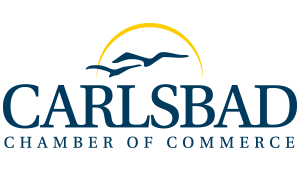Business value is not built solely on the accumulation of tangible assets, such as equipment and machinery, but also on the intangibles, known as "goodwill," which contribute to the profitability of a business. The value of a business is determined by its ability to generate cash flow and the risks associated with consistently producing that cash flow.
According to a study by KPMG titled, "Intangible Assets and Goodwill," more than 50 percent of the purchase price of a business is typically allocated to goodwill.
Since the largest part of the purchase price of a profitable small business is usually goodwill, it is important to have knowledge and understanding of just what goodwill is and why there is value in it. That goodwill value is simply calculated as the difference between the purchase price of the business and the fair market value of the tangible assets included in the sale.
One of the greatest fears that business buyers have is the risk that the profitability of a business will falter after it changes hands. That is why buyers are typically willing to pay more for businesses with strong management and those that can operate with a semi-absentee or absentee owner. On the flip side, businesses whose owners play a crucial role in the day-to-day operations of their business should not expect to fetch as high a price.
If I could give one piece of advice to a business owner, it would be this: When you are 3 -5 years out from selling your business, work with a professional to help you create and implement an exit strategy.
A key component of that plan should be the gradual phasing out of the owner from the day-to-day operations of the business. Besides a consistent cash flow and upward sales trends, this is one of the key factors that can help increase the goodwill of your business, which will equate to a higher sales price when the time comes for you to exit your business.
McGrath can be reached at [email protected]
According to a study by KPMG titled, "Intangible Assets and Goodwill," more than 50 percent of the purchase price of a business is typically allocated to goodwill.
Since the largest part of the purchase price of a profitable small business is usually goodwill, it is important to have knowledge and understanding of just what goodwill is and why there is value in it. That goodwill value is simply calculated as the difference between the purchase price of the business and the fair market value of the tangible assets included in the sale.
One of the greatest fears that business buyers have is the risk that the profitability of a business will falter after it changes hands. That is why buyers are typically willing to pay more for businesses with strong management and those that can operate with a semi-absentee or absentee owner. On the flip side, businesses whose owners play a crucial role in the day-to-day operations of their business should not expect to fetch as high a price.
If I could give one piece of advice to a business owner, it would be this: When you are 3 -5 years out from selling your business, work with a professional to help you create and implement an exit strategy.
A key component of that plan should be the gradual phasing out of the owner from the day-to-day operations of the business. Besides a consistent cash flow and upward sales trends, this is one of the key factors that can help increase the goodwill of your business, which will equate to a higher sales price when the time comes for you to exit your business.
McGrath can be reached at [email protected]
